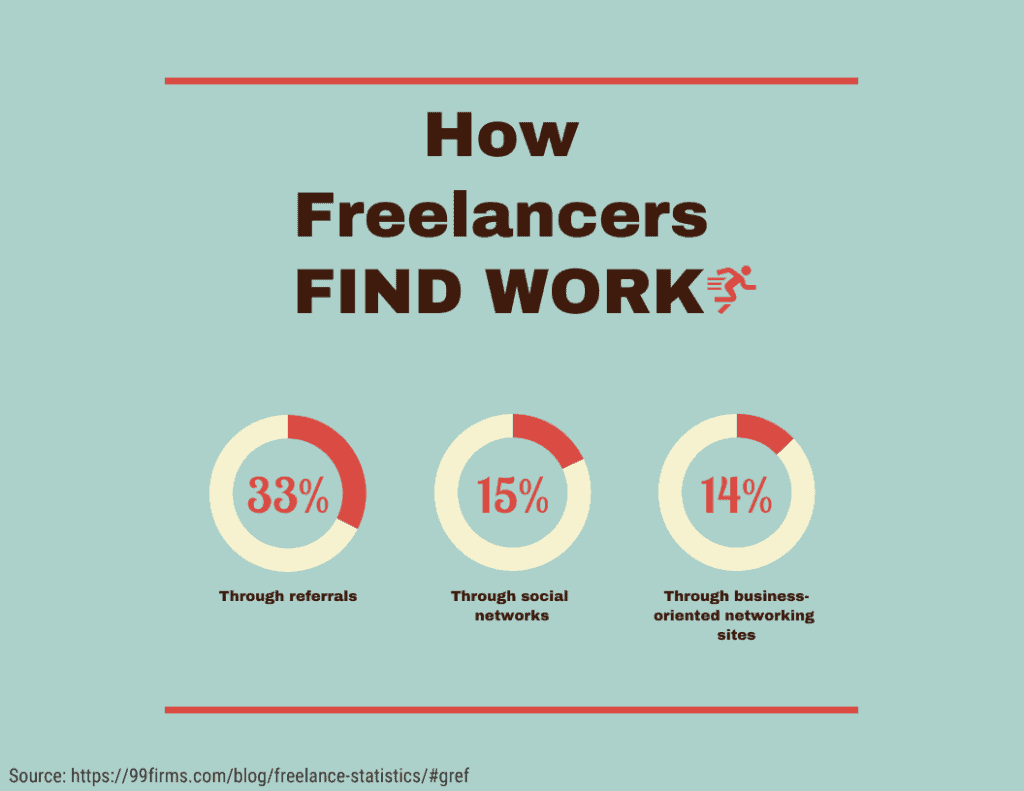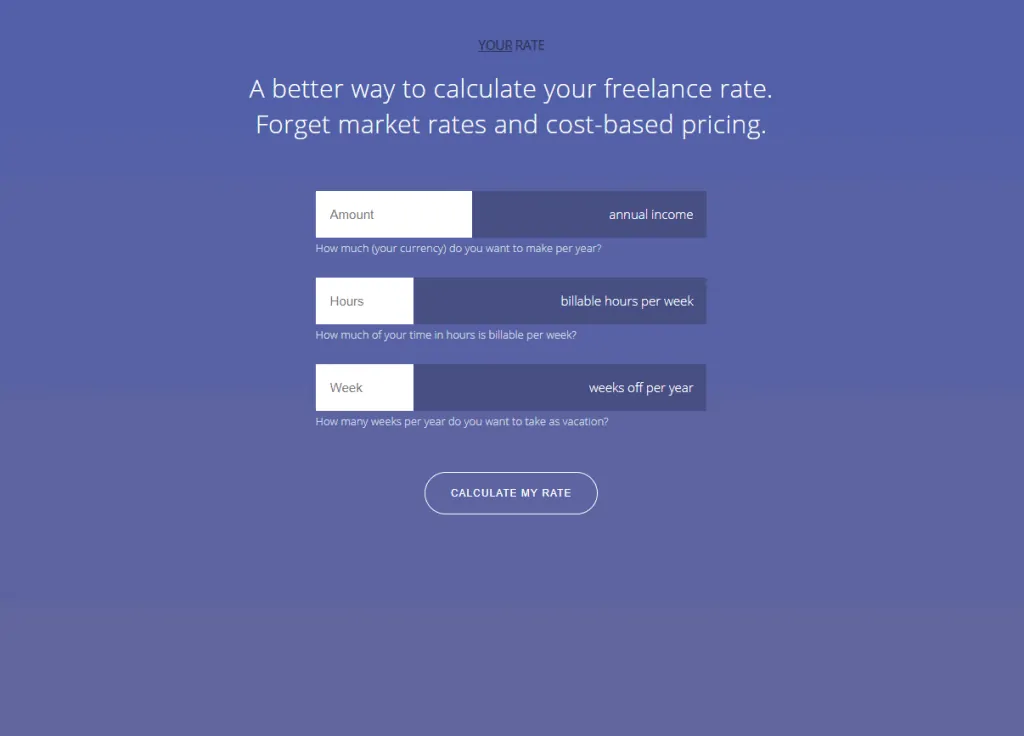Last Updated on 1 year by Francesca Egay
One of the first questions asked by anyone trying to get into freelancing is: Where do I find clients? Getting work from clients is the lifeblood of a freelancing career—it’s how you make the money to pay your bills.
And while you could start off on sites like Upwork and Fiverr, you may find that you’re not getting the high-paying gigs you had hoped for.
So how do you land the high-ticket clients? Whether you’ve been freelancing for a while or you’re just getting started, these tips should help.
1. Build a portfolio
When you’re freelancing, a resume usually won’t be enough to convince a potential client that you’ll do a great job. You’ll need a portfolio of past projects and work samples to really win them over. So, before you start trying to track down any high paying clients, you should build a professional portfolio that showcases your best work.
First, you should create a general portfolio that you make public. You should make this portfolio available on your website, your social media pages, freelance job sites, and any relevant industry sites. Make this portfolio look nice and presentable so that potential clients immediately trust you. For ideas and inspiration, research other professional portfolios or use an online portfolio building tool.
In your general portfolio, include the work you’re most proud of and try to make the samples as diverse as possible. Demonstrate that your skills are versatile and can translate to different topics and different industries.
If you’re making a pitch to a specific client, however, you’ll want to tailor your portfolio so that it aligns with their needs and goals. Show them that you can work in their industry, write in their voice, design with their style in mind, etc.
2. Network
Networking is important for any professional, but it’s absolutely essential when you’re a freelancer.
33% of freelancers report finding work through referrals, 15% get work through social networks, and 14% get work through networking sites like LinkedIn. Thus, if you want to start landing high-ticket clients, you’ll have to make an effort to build a professional network.

There are a variety of effective ways to go about building a network. You could start by asking family members and friends if they know of anyone looking for the services you provide. It takes very little effort on your part and they may be able to connect you with some great clients.
You should also try to use social media to generate business for yourself. Create profiles on networking sites like LinkedIn, as well as any networking sites relevant to the industry you work in. Advertise your services on other social media sites like Facebook, Twitter, and Instagram using either your personal profile or a profile you create specifically for your freelancing services.
Reach out directly to companies you want to work for and people you want to connect with via these social media sites. Try to not only connect with potential clients, but also other people in the same industry as you. It’s important to build relationships with people in your industry, even if they’re not clients, because they may be able to provide you with work opportunities in the future.
3. Know your worth
Many freelancers undervalue the services they provide for too long, resulting in low pay that they can barely use to make ends meet. In order to get the high paying jobs that you dream about you’ll first have to realize your own value.
To start, you’ll need to determine a fair rate for your services. Look around online and do some research into what other freelancers in your industry charge. Alternatively, use Referral Rock’s online rate calculator tool to determine your freelance rate.

When you’re just starting out and trying to build a portfolio, it makes sense to charge a low rate—but don’t do this for too long. You’ll find that charging next to nothing for your services isn’t a sustainable strategy for attracting and retaining clients. When you set a low rate, you attract low-paying companies who are unlikely to be flexible in raising their rates in the future.
Besides, most reputable companies are looking to hire a great worker rather than the person who charges the lowest price.
Companies are often willing to pay well above bottom-tier rates in order to ensure that they receive quality work in return. In fact, many companies will actually be put off by freelancers who charge very low rates, as they assume the work won’t be as good or the freelancer won’t handle the project with much care.
So, even if you start off by charging a low rate, quickly raise it. Steadily raise your rate as you accumulate more experience, learn more, and sharpen your skills.
If you hesitate about setting high rates, keep in mind that, as a freelancer, you’re often much cheaper for a company to hire than a full-time employee since you’re used on an as-needed basis and the company doesn’t need to provide you with the same benefits or bonuses that it would with a full-time worker.
Lastly, but perhaps most importantly, when a potential client expresses interest in your services, don’t be afraid to talk about money.
If a company offers you a project at a price below your usual rate, it isn’t rude or ungrateful to ask for more money.
Negotiating over pay is a completely normal part of any business relationship and, if you don’t negotiate, you could end up leaving a lot of money on the table.
So be firm with your rate (of course you might lower it based on the client, project, the promise of continued work, etc.) and don’t be afraid to say no to potential clients whose budget is too low.
4. Work in a niche
Finding a niche is a great way to build a steady client base and start earning more money as a freelancer. When you pick a specialty and become an expert in that area, you effectively reduce the amount of competition you face and provide a greater value to potential clients within that niche.
For example, if you brand yourself as just a general freelance writer, you’ll be competing with tens of thousands of writers with years of experience, and long, impressive portfolios. However, if you were to brand yourself as a freelance writer specializing in interior design, you would face far less competition and have a much more specific client base that you could pitch to.
By becoming an expert in one area, you’ll build up a specialized knowledge and skill set that not many people have, and more clearly define who your client base is, making it easier to pitch to the high-paying ones.
Conclusion
Following these tips can help you step away from those low-paying clients and work with ones that pay you what you’re worth.
Not only can you earn more money by doing this, but you’ll be able to devote more time and energy to projects you care about instead of jumping from one low-paying assignment to the next.

Samantha Rupp
Managing Editor, 365businesstips.com
Samantha Rupp holds a Bachelor of Science in Business Administration. She lives in San Diego, California, and enjoys spending time on the beach, reading up on current industry trends, and traveling.

